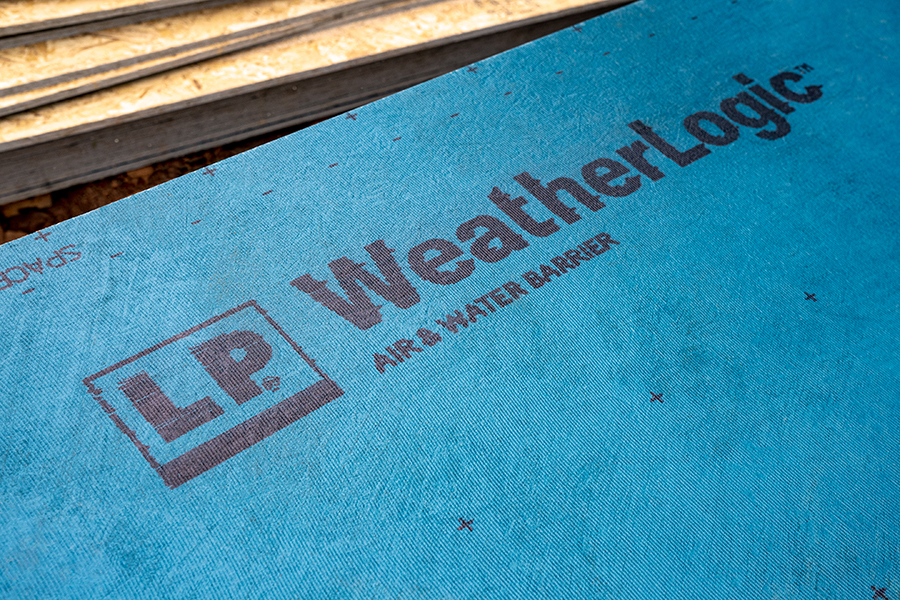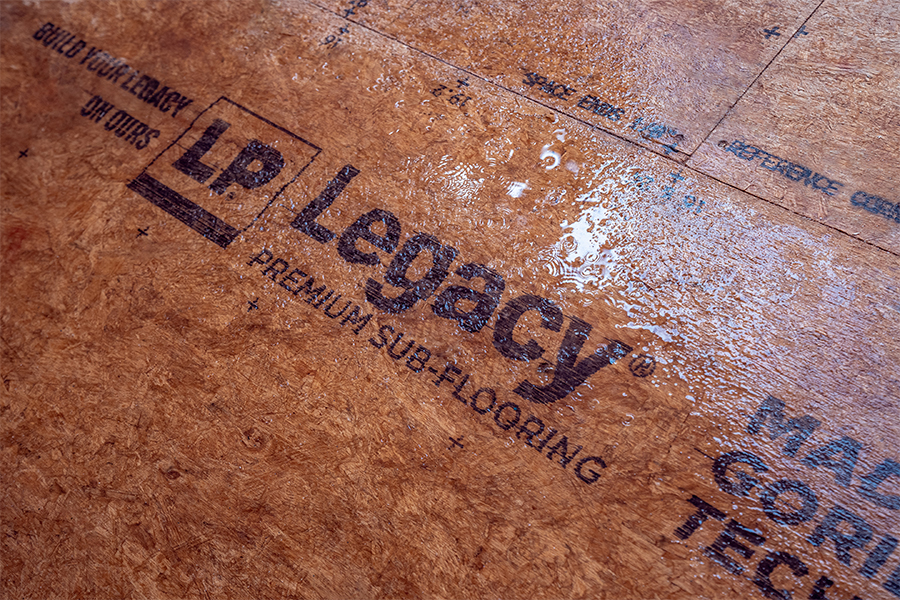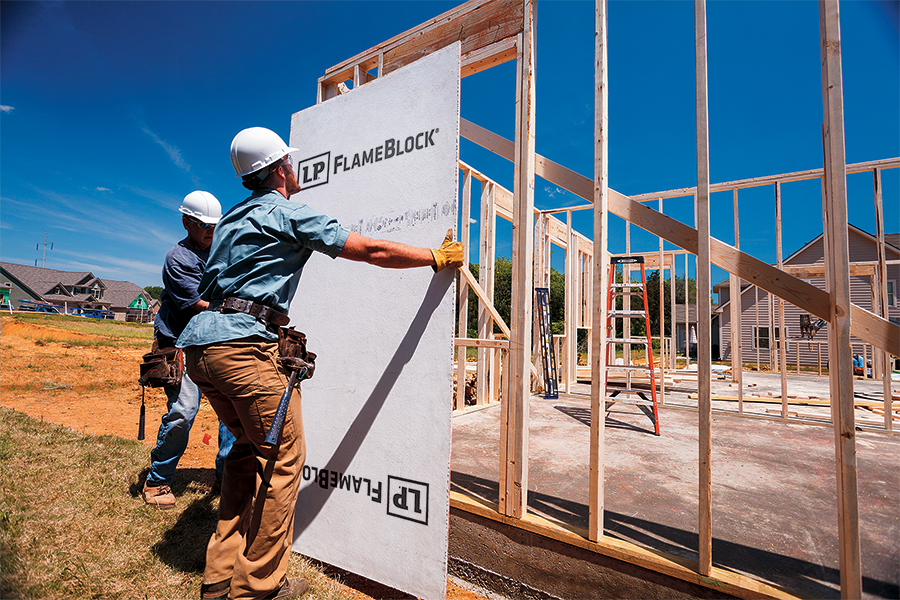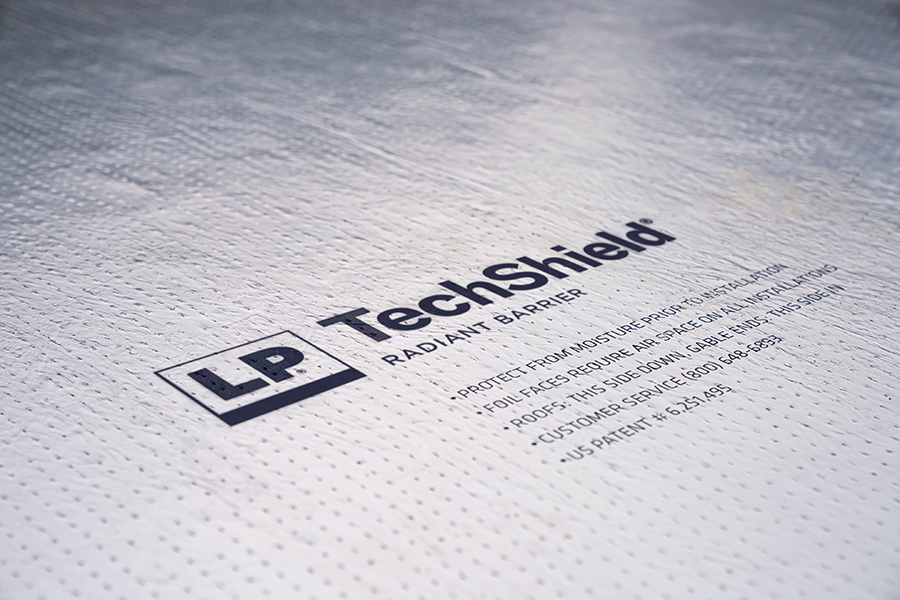Inspiration7 min
6 Must-Haves for Resilient Construction
There's no question builders want their homes to endure. But times are changing, and the opportunities to look fondly upon a home you've built after another 30 years are being affected by climate change and the threat of increasingly more powerful storms.
How do you increase resilience in a building? Before we explore the must-haves for resilient construction, let's define resilient construction's meaning and what makes a home resilient.
What Makes a Building Resilient?
To be "resilient," buildings must be able to withstand intense natural events. Resilient home construction helps protect the occupants inside, so they not only survive these conditions but thrive too.
Whether a home is affected by devastating wildfires and earthquakes in the West, fierce derechos and tornadoes in the Midwest and Southeast, destructive hurricanes across the Atlantic and Gulf Coasts or flash flooding and high winds from coast to coast, the use of resilient construction materials is proving to be a major factor in building resilient homes.
"Resilience in construction means different things to different people because nature's threats are geographically specific," explains Craig Miles, Director of OSB Sales & Marketing at LP Building Solutions. "Resiliency in building materials gives you a more predictable series of outcomes as well as the ability to withstand weather and other external threats."
According to Miles, LP approaches climate resilience from the perspective of the overall impact of the climate on the home, including structural strength, safety and comfort. “For us, resiliency is about overall performance,” said Miles, “not just standing up to storms.” In fact, the company developed its LP® Structural Solutions portfolio to deliver precisely that kind of performance as building houses for climate change becomes a necessity.
Can a building be resilient? Choosing building materials that address outside threats can help increase the build's overall resiliency. Let's take a look at our top must-haves for resilient construction.
1. LP WeatherLogic® Air & Water Barrier for Better Moisture Management
Water intrusion is a threat across the country. Whether it's from tremendous amounts of rainwater beating against and draining down the home's exterior or the lingering moisture from a humid summer, water intrusion can wreak havoc on a home and its occupants.
LP WeatherLogic® Air & Water Barrier offers a continuous air and water barrier while allowing water vapor to escape. This moisture management technology helps safeguard the home from water intrusion for a tighter building envelope, which promotes long-term energy efficiency.

“Moisture is the biggest threat to the building envelope,” says Miles. “LP WeatherLogic panels and our Seam & Flashing Tape inherently keep moisture out.”
LP WeatherLogic Seam & Flashing Tape helps create a water-resistant seal between the LP WeatherLogic panels and other areas where water can intrude, such as windows and door frames. It's the final and most crucial step in creating a continuous exterior air barrier that blocks cold air and helps prevent water intrusion.
2. LP Sub-Flooring Options Fortify Against Moisture
LP Legacy® Premium Sub-Flooring is recognized as one of the stiffest sub-floors on the planet. It's engineered to resist moisture impact from weather during construction, providing better performance by keeping floors flatter and more level.

The majority of home builds are started in early spring, and it's often quite some time until the roof can be installed. Until then, the sub-flooring is exposed to brutal spring rain and harsh thunderstorms. Without a premium sub-floor there's a strong potential for closing up with a waterlogged floor, possibly causing severe issues down the road.
Packed with more resin, wax and wood strands and made with Gorilla Glue Technology®, LP Legacy Premium Sub-Flooring boasts superior moisture resistance. As a result, LP Legacy panels carry a class-leading Covered Until It's Covered® No-Sand Warranty as well as a Lifetime Limited Warranty that lasts as long as the home.
LP® TopNotch® 350 Durable Sub-Flooring also provides a great option for mitigating moisture concerns during a build. Equipped with unique RainChannel® technology that helps drain rainwater away during construction, LP TopNotch 350 panels are designed for optimum moisture resistance. They also feature a tongue-and-groove notch system that helps speed installation.
3. LP® FlameBlock® Fire-Rated Sheathing is Proven to Slow the Spread of Flames
Much of the world is seeing rising temperatures and dryer climates for longer periods of time. In states including California, Oregon, Idaho, Nevada and even areas of Tennessee and South Carolina, wildfires are consuming acres of forests, threatening homes and communities. These areas are adopting wildland-urban interface (WUI) codes to mitigate risks from wildfire.
Among the topics covered in WUI codes are building materials and construction, including roof
assembly and covering, eaves, vents, gutters, exterior walls and non-combustible surfaces. LP® FlameBlock® Fire-Rated Sheathing is a listed component in 1-hour fire-resistance rated wall assemblies with exterior resistance and in the CAL FIRE WUI Products handbook for use as exterior wall sheathing and under eave material.
Proven to slow the spread of flames, LP FlameBlock Fire-Rated Sheathing combines flame-spread resistance and burn-through resistance in a single panel. The fire-rated sheathing is evaluated to meet code requirements for fire-resistant construction and does not require reductions in strength.

LP FlameBlock sheathing has the versatility to be used in most types of construction and is a listed component in fire-resistance-rated wall assemblies.
4. Structural I Sheathing Helps Mitigate Damage in High Wind and Earthquake-Prone Areas
While you're likely to think homes along the Atlantic and Gulf Coasts are at higher risk for significant winds and hurricanes, many areas, in fact, across the U.S. are exposed to hurricane-force wind speeds.
These high winds can create substantial lateral-i.e. horizontal-loads on a structure. The winds push on the windward-or upwind-walls and create suction that pulls on the leeward-or downwind-walls. These loads are additive and require shear walls to transfer those loads down to the foundation.
Choosing the best sheathing can help mitigate damage and potentially reduce the extent of rebuilding.
“We can't build tornado- or hurricane-proof homes. But with the LP Structural Solutions portfolio, we can build homes that can help mitigate the radius of damage from the core of the storm,” says Miles.
For resilient construction, look for APA Structural I Rated Sheathing. Also known as Struc I, these products offer increased racking and cross-panel bending strength. For example, LP Legacy Premium Sub-Flooring in the 23/32 Performance Category and LP WeatherLogic wall and roof sheathing are Struc I products. They are ideal for use when extra capacity, exceptional load bearing and greater strength are needed.
This leads to another need for resilient homes-earthquakes. LP recommends using Struc I panels in areas prone to seismic activity as lateral forces can twist and compromise the integrity of the structure.
Additionally, Miles considers defending a home against rising energy costs related to resiliency. "To me, resiliency means not only that your home won't get knocked down, but how resilient is your home to unpredictable factors? This is where radiant barriers and continuous insulated come in. Though we can't predict the costs of energy, we can help to ensure homes have the ability to mitigate energy use as much as possible."
5. LP® TechShield® Radiant Barrier for Impressive Energy Efficiency
As our summers get warmer, hard-working air conditioners put a strain not only on the electrical grid but on our wallets, too.
LP® TechShield® Radiant Barrier blocks up to 97 % of radiant heat in panels from emitting into a home's attic, lowering attic temperatures by up to 30 degrees. Installing LP TechShield Radiant Barrier helps reduce your customers' cooling costs for long-term energy efficiency.

With no radiant barrier in place, the heat from the sun passes through a home's roof into the attic. This raises the temperature of the living space underneath it, which often causes the homeowner to lower the temperature on the air conditioning. This can also make it tougher for the home's HVAC system to maintain temperatures.
6. LP NovaCore™ Thermal Insulated Sheathing Helps Dominate Thermal Performance
As the latest addition to the LP Structural Solutions portfolio, LP NovaCore™ Thermal Insulated Sheathing panels combine the trusted strength of OSB with continuous insulation. It's made with Owens Corning® FOAMULAR® NGX™ XPS foam to provide continuous insulation. The XPS foam does not lose R-value in cold temperatures; instead, it can actually gain some R-value. LP NovaCore sheathing helps make homes more comfortable and more resilient against temperature swings in the summer and winter months.

Ultimately, the LP Structural Solutions portfolio helps mitigate issues both from momentary weather disasters and ongoing weather concerns. "With disaster-resilient building materials we can limit severe damage, improving the resiliency of our homes. Look how much you save from building better the first time," says Miles. "Used together, the LP Structural Solutions portfolio affects everyone positively."
Be sure to view the entire portfolio of Structural Solutions products that allow you to build longer, straighter and more resilient structures.
Continue Reading
Resiliency Solutions
5 minIntroducing LP® SmartSide® ExpertFinish® Naturals Collection™: Nature-Inspired Beauty Meets Engineered Performance
We're excited to introduce the LP® SmartSide® ExpertFinish® Naturals Collection™, a bold new addition to our trusted line of engineered wood siding and trim that delivers the warmth and beauty of nature with the advanced protection and performance builders and homeowners expect.
Labor Solutions
5 minChoosing the Right LP® Structural Solutions Product for Your Build
When it comes to building strong, reliable, and high-performing structures, the materials you choose matter. At LP Building Solutions, we understand that every project, whether it's a single-family home or a multifamily development, requires structural components that meet your needs for strength, durability, and efficiency.
Sustainability Solutions
5 minBuilding a More Sustainable Future with LP Building Solutions
In today's world, sustainability is no longer just a buzzword, it's a blueprint for responsible living and smarter building. As the construction industry seeks ways to reduce its environmental footprint, LP Building Solutions is focused on providing innovative building materials for eco-conscious builders to help reshape what it means to build sustainably
News & Stories3 min
History of Partnership with Gary Sinise Foundation
The LP Foundation is a proud partner of the Gary Sinise Foundation, which supports wounded veterans in several ways. You can learn more about the LP Foundation here.